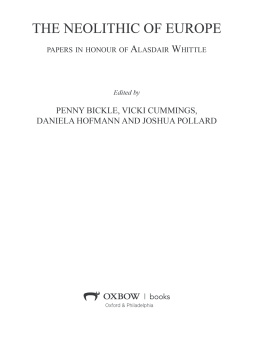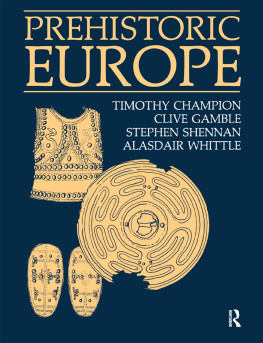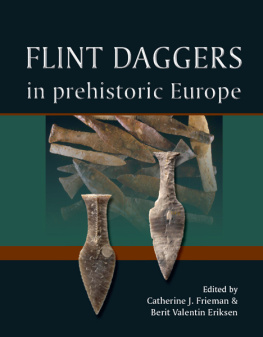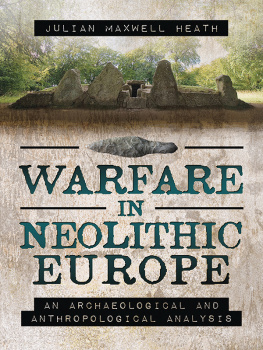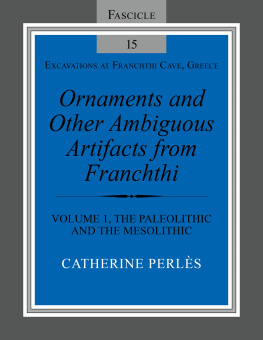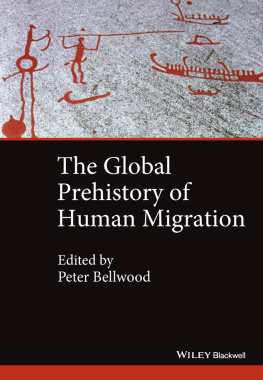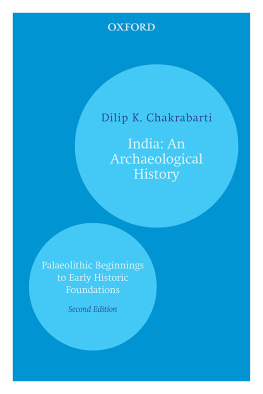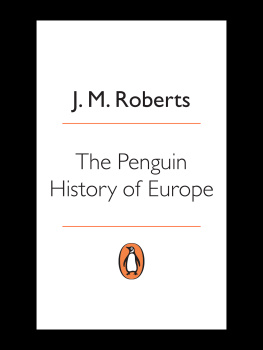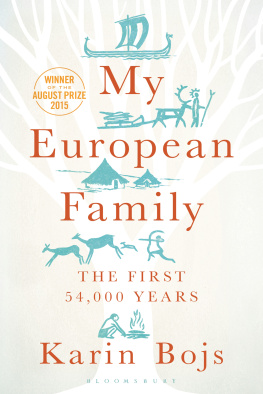ROUTLEDGE LIBRARY EDITIONS: ARCHAEOLOGY
Volume 32
THE PREHISTORIC FOUNDATIONS OF EUROPE
THE PREHISTORIC FOUNDATIONS OF EUROPE
To the Mycenean Age
C. F. C. HAWKES
First published in 1940
This edition first published in 2015
by Routledge
2 Park Square, Milton Park, Abingdon, Oxon, OX14 4RN
and by Routledge
711 Third Avenue, New York, NY 10017
Routledge is an imprint of the Taylor & Francis Group, an informa business
1940 C. F. C. Hawkes
All rights reserved. No part of this book may be reprinted or reproduced or utilised in any form or by any electronic, mechanical, or other means, now known or hereafter invented, including photocopying and recording, or in any information storage or retrieval system, without permission in writing from th publishers.
Trademark notice: Product or corporate names may be trademarks or register trademarks, and are used only for identification and explanation without inten to infringe.
British Library Cataloguing in Publication Data
A catalogue record for this book is available from the British Library
ISBN: 978-1-138-79971-4 (Set)
elSBN: 978-1-315-75194-8 (Set)
ISBN: 978-1-138-81379-3 (Volume 32)
elSBN: 978-1-315-74788-0 (Volume 32)
Publishers Note
The publisher has gone to great lengths to ensure the quality of this book but points out that some imperfections from the original may be apparent.
Disclaimer
The publisher has made every effort to trace copyright holders and would welcome correspondence from those they have been unable to trace.
THE PREHISTORIC FOUNDATIONS OF EUROPE
To the Mycenean Age
BY
C. F. C. HAWKES
M.A., F.S.A.
Assistant Keeper of British Antiquities, British Museum
With 12 Plates
6 Maps and Tables
and many Text Illustrations
METHUEN & CO. LTD., LONDON
36 Essex Street Strand W.C. 2
First published in 1940
PRINTED IN GREAT BRITAIN
THIS book first took shape as a smaller volume, designed to interpret only the collections of the British Museum and other museums in London, and I have to thank Sir George Hill and Dr. R. E. M. Wheeler both for its original inception and, together with the publishers, for the change of plan that has given it its present form.
My acknowledgements to the Trustees of the British Museum, and to those others who have generously allowed me to reproduce illustrations from various sources, will be found overleaf; here I should wish only to add my gratitude to the Director of the Museum and to the past and present Keepers of British Antiquities there, Mr. Reginald Smith and Mr. T. D. Kendrick, from whom I have learnt and received so much. For the rest, I have tried to see my subject as a whole, and to bring out the sense of a basic European unity which has been borne in upon me so strongly by the study of prehistory. I have tried to form my own judgement on the many issues of specialist controversy involved, and have not hesitated to interpret the story as I see it, rather than offer simply a compilation of the views of others. But, since one mind owes what it sees necessarily in the main to others work, I wish above all to express my deep indebtedness to my masters and fellow-workers in prehistoric studies, not only in this country but throughout Europe. Something of this will appear from my bibliography, but it really goes much further than that. The feeling of solidarity and friendship between archaeologists of many nations has truly been, in the last twenty years, among the forces making for the intellectual harmony of our civilization, and I know that it will not be killed. Lastly, I owe more than I can say to the good counsel and long-sustained encouragement of my wife.
C. F. C. H.
BRITISH MUSEUM, LONDON, W.C.1
December 1939
PLATE I
Photo: T.D. Kendrick
STONEHENGE: A VIEW SOUTH-EASTWARD FROM THE CENTRE
The two standing trilithons of the sarsen horseshoe, part of the blue-stone horseshoe in front of them, and glimpses of the outer circles behind. The recumbent stone on the right is the altar stone. See
OF SOURCES OF ILLUSTRATIONS
I DESIRE to express my gratitude to Mr. T. D. Kendrick for , 5. All the other photographs used for the Plates are of originals or reproductions in the British Museum.
I am indebted to the Trustees of the British Museum for permission to reproduce the following illustrations from official publications:
From the Stone Age Guide: .
From The Sturge Collection (R. A. Smith): .
From the Catalogue of Vases, I, Pt. 1, Prehistoric Aegean Pottery (E. J. Forsdyke): .
From the Bronze Age Guide: .
To the Council of the Society of Antiquaries of London I am indebted for , from Dr. Curwens The Archaeology of Sussex (County Archaeologies series).
The following objects illustrated in line are in the British Museum: to Dr. J. G. D. Clark.
C. E. C. H.
CONTENTS
PLATES
ILLUSTRATIONS IN THE TEXT
MAP AND TABLES
(At end)
MAP I TABLE I |  | LOWER AND MIDDLE PALAEOLITHIC |
MAP II TABLE II |  | UPPER PALAEOLITHIC AND MESOLITHICTABLE |
MAP III TABLE III |  | THE SOUTH-EAST AND THE DANUBIAN EXPANSION: SOUTH-EASTERN AND DANUBIAN EUROPE, 31002100 B.C. |
MAP IV TABLE IV |  | THE WEST, THE SEA-WAYS, AND THE NORTH: MEDITERRANEAN, WESTERN, AND NORTHERN EUROPE, 31001900 B.C. |
MAP V TABLE V |  | THE ANTECEDENTS OF BRONZE AGE EUROPE: THE CHANGING PATTERN OF EUROPEAN CULTURES, 23001700 B.C. |
MAP VI TABLE VI |  | THE ACHIEVEMENT OF THE EUROPEAN BRONZE AGE, 18001400 B.C. |
THIS book is an attempt, based upon the findings of archaeology, to trace in outline the early foundations of human culture in Europe. The period so covered is there illumined by no written record of its own. In fact, whereas in its later phases such record begins to be available in the Near East, to which the West came to owe so much, the ages of European genesis are wholly prehistoric. But though, compared with the historians, the prehistorians task has its obvious disabilities, yet priority to historic time itself contains an ultimate advantage. For the significance of human doings and institutions does not begin with their written history, and he who thus considers things in their first growth and origin, whether a State or anything else, will obtain the clearest view of them. That remark was made by Aristotle in introducing his treatise on Politics, and whether or no we can call prehistoric man a political animal, it at least brings out the vital importance of prehistory in the study of human kind. And there is no true cleavage between history and prehistory: the verbal distinction between them rests simply on the presence or absence of written material in our equipment for their pursuit. It is indeed often said that there are peoples which have no history. But all peoples have culture which can be assessed and accounted for, and beyond the scope of history this is the business of archaeology, which thus carries out for the peoples of the past the work which anthropology does for those who have remained without history until the present, in its critical sifting of not only diffusion among them, but functional interlocking within them, of living elements of culture. And the further archaeology can go towards fixing events of the human past in definite order of time, the greater will be its contribution to the anthropologists, no less than to the historians, knowledge of humanity.


